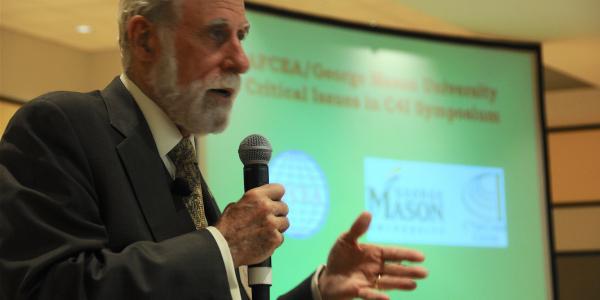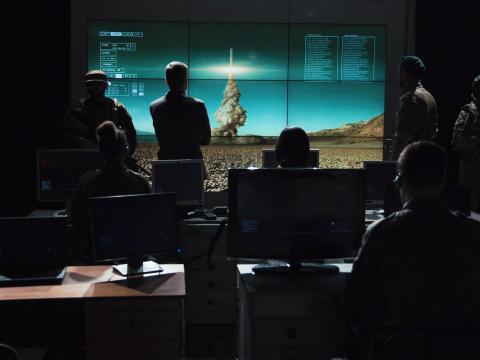Risk Taking Leads to the Rewards of Innovation
Innovative acquisition is the oxymoron that should drive needed change in government buying circles. Value and relevance to meet critical needs drives innovation and the ambition to be out in front of the threat, not behind it.
Innovative acquisition is the oxymoron that should drive needed change in government buying circles. Value and relevance to meet critical needs drives innovation and the ambition to be out in front of the threat, not behind it. But innovation also demands risk, and to gain ground, experts must tweak the notoriously risk-adverse government’s acquisition process that plays a central role in making technological progress possible. A key issue is where the right amount of risk can intersect with the rewards of innovation.
Researchers, military leaders, academics, acquisition professionals and industry personnel all face challenges in inspiring innovation. Regardless of the roles, their overall goal is to transition new ideas into products that support the mission. Communication that enables sharing of ideas also facilitates collaboration and leads to innovation.
During the AFCEA International/George Mason University Critical Issues in C4I symposium in May, experts acknowledged innovation is essential, but they also agreed that it takes risk to advance. Fail fast and fail cheap are not as simple as they sound unless there is cultural acceptance.
One of the most important elements of innovation is creating an atmosphere where employees have “the freedom to fail,” said Vint Cerf, touted as one of the “fathers of the Internet” and now vice president and chief Internet evangelist for Google. “I can tell you at Google, we are given that freedom. However, there is a price to pay. We have to shoot as high as possible. Shoot for the moon, and even if you don’t get the moon shot, you may get something that’s actually more useful.” Cerf recognized the difficulty within the military environment of recommending a freedom to fail notion, but he offered that in the research and development arena “you learn a lot more from failures than you do from success” and recommended leaders fold the adaptation idea into the command, control, communications, computer and intelligence (C4I) environment.
Lt. Gen. Arnold W. Bunch Jr., USAF, military deputy, Office of the Assistant Secretary of the Air Force for Acquisition, echoed the sentiment about the lessons learned from failure—an approach that takes on graver importance in the military because it could mean losing a war, he said. “If we have program managers taking educated and informed risk, and they fail, senior leadership has to support them. I am not talking about taking wild risks, but if we fire the person who fails after taking a well thought-out risk, others are not going to come forward with anything innovative.
“We need to see if ideas work before we throw a lot of money at them,” advised the general, who says the Air Force must incentivize non-traditional companies to compete to cause behavioral changes. “We have to get over the hurdle that makes it too slow and onerous to do business with us.”
Staying ahead with technology is essential because anything of importance has been digitized by now, Gen. Bunch offered. Forecasting the future of innovation requires identifying trends and analyzing data at many levels.
Bob Gourley, co-founder of Cognitio, has coined the term “cambric” to illustrate the seven technologies that, when put together, will disrupt humanity. At the symposium, he explained that cambric stands for cloud computing, artificial intelligence, mobility, big data, robotics, the Internet of Things and cybersecurity. The trends hold great potential for a “great world” if well engineered and administered—from improved health care to law enforcement and military operations. “But, we have to be realistic too,” Gourley said. “There are serious risks in all this stuff that requires us to pause and think. Are we going to live in a world with increased risk to privacy? Are we going to make it easier for white-collar criminals … to steal financial information? What about job displacement? We owe it to all ourselves to have that discussion.”
The physical and virtual worlds are converging. The cyberspace domain and information environment are converging, said Lt. Gen. Rhett Hernandez, USA (Ret.), who serves as West Point Cyber chairman to the Army Cyber Institute and is president of CyberLens LLC. He was the first commander of the Army Cyber Command.
Incident response, not prevention, drives today’s cyberspace activity. “We have given up on stopping it,” Gen. Hernandez said. “We need to change that mindset to one where we know we are not going to stop it all, but we will invest in innovation to protect.” Defenders must make the threat up its game, he explained. “The more expensive it is for the threat to obtain incremental benefits, the more the threat is reduced.”
Through innovation, society must adjust the human-machine balance to increase operational effectiveness. This begins with investing in people and technology and developing a foundational trust in each other and in leaders who will provide the capabilities for success. Trust is the number one ingredient that creates or hinders innovation, he explained.
Other leaders participated in the two-day event, which drew some of the most innovative thinkers in C4I to ensure communications needs are met, paving the way for understanding, innovation and solutions.
For full event coverage, go to www.afcea.org/site/?q=Critical-Issues-2016-Archive





Comments